overleaf template galleryCommunity articles — Recent
Papers, presentations, reports and more, written in LaTeX and published by our community.
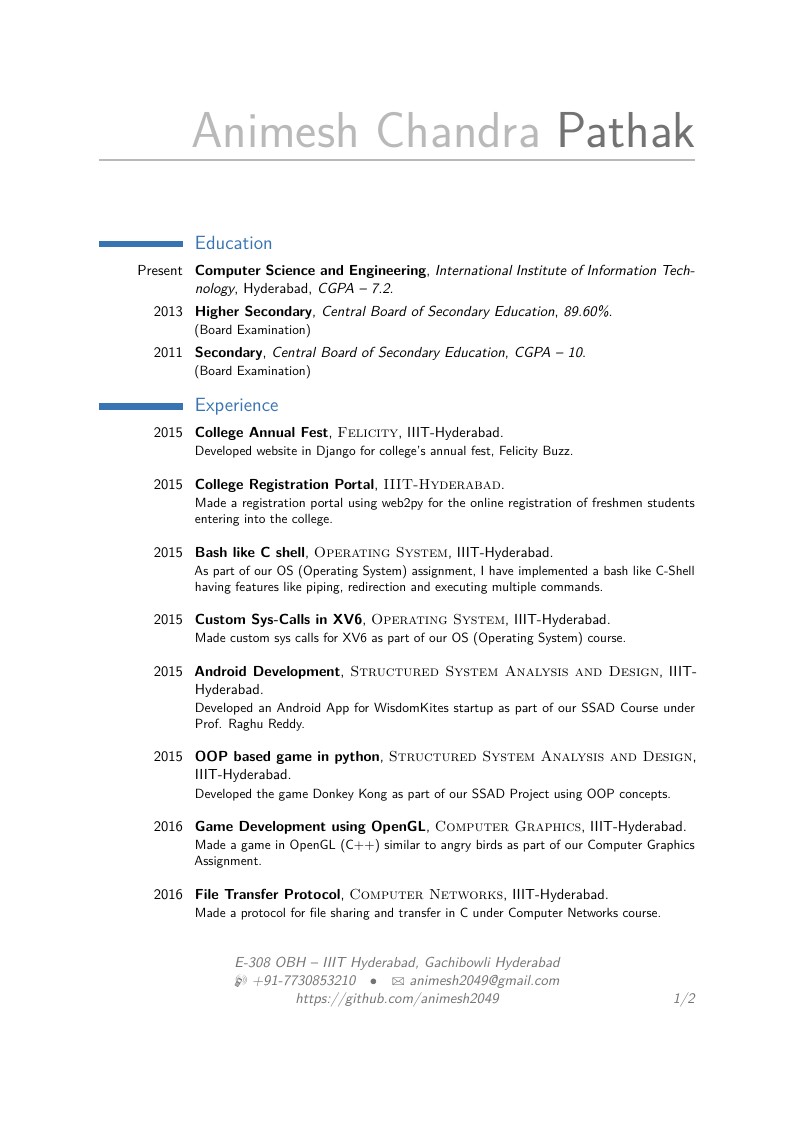
Animesh Chandra Pathak's CV
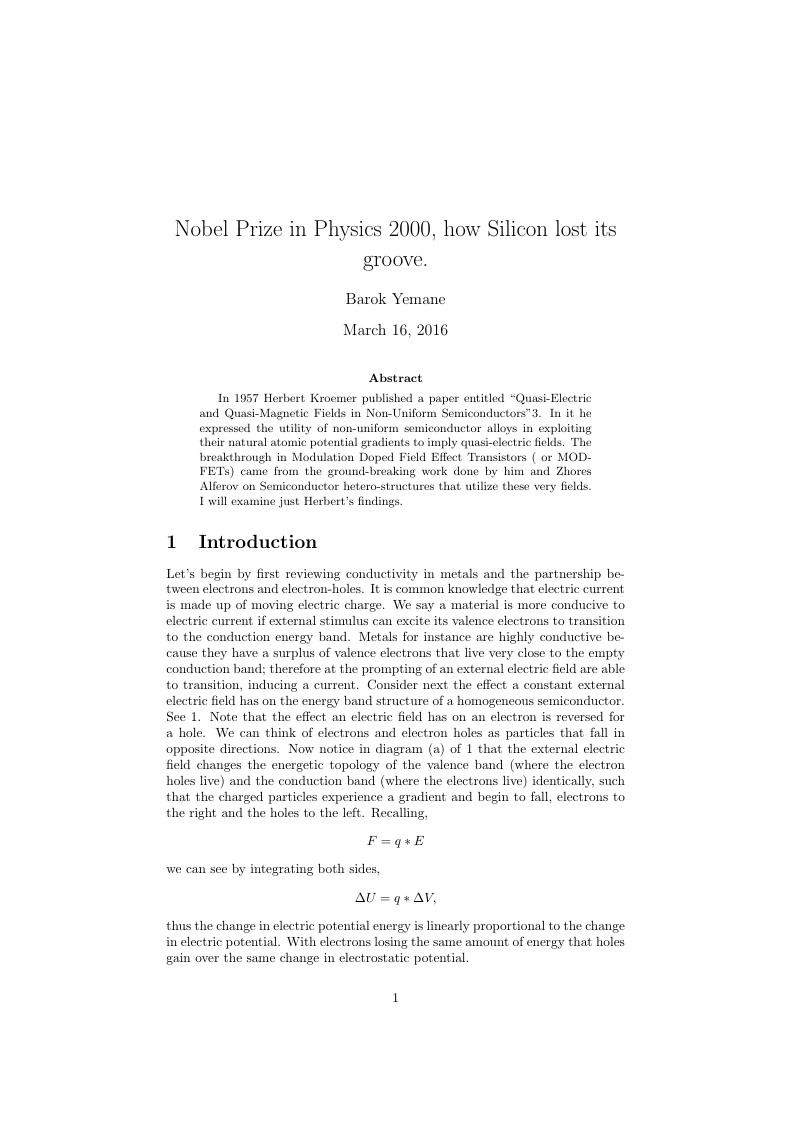
In 1957 Herbert Kroemer published a paper entitled “Quasi-Electric and Quasi-Magnetic Fields in Non-Uniform Semiconductors". In it he expressed the utility of non-uniform semiconductor alloys in exploiting their natural atomic potential gradients to imply quasi-electric fields. The breakthrough in Modulation Doped Field Effect Transistors ( or MODFETs) came from the ground-breaking work done by him and Zhores Alferov on Semiconductor hetero-structures that utilize these very fields. I will examine just Herbert’s findings.
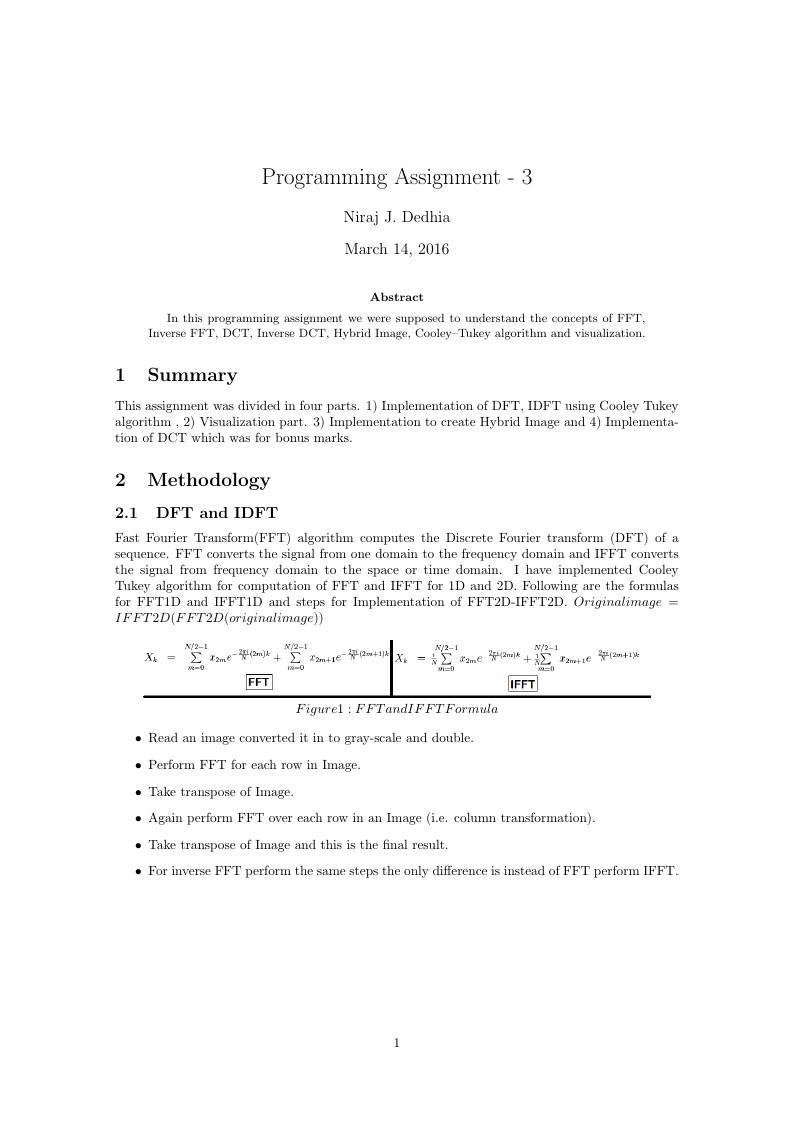
In this programming assignment we were supposed to understand the concepts of FFT, Inverse FFT, DCT, Inverse DCT, Hybrid Image, Cooley–Tukey algorithm and visualization.
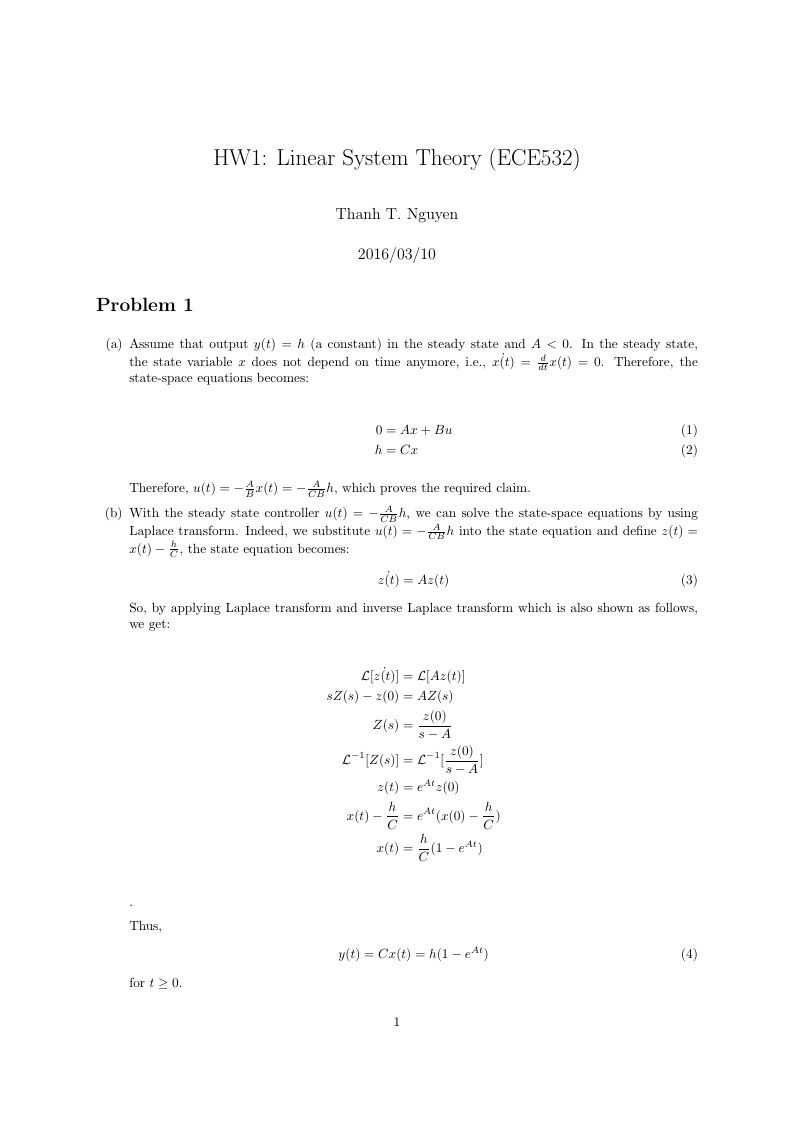
HW1: Linear System Theory (ECE532)
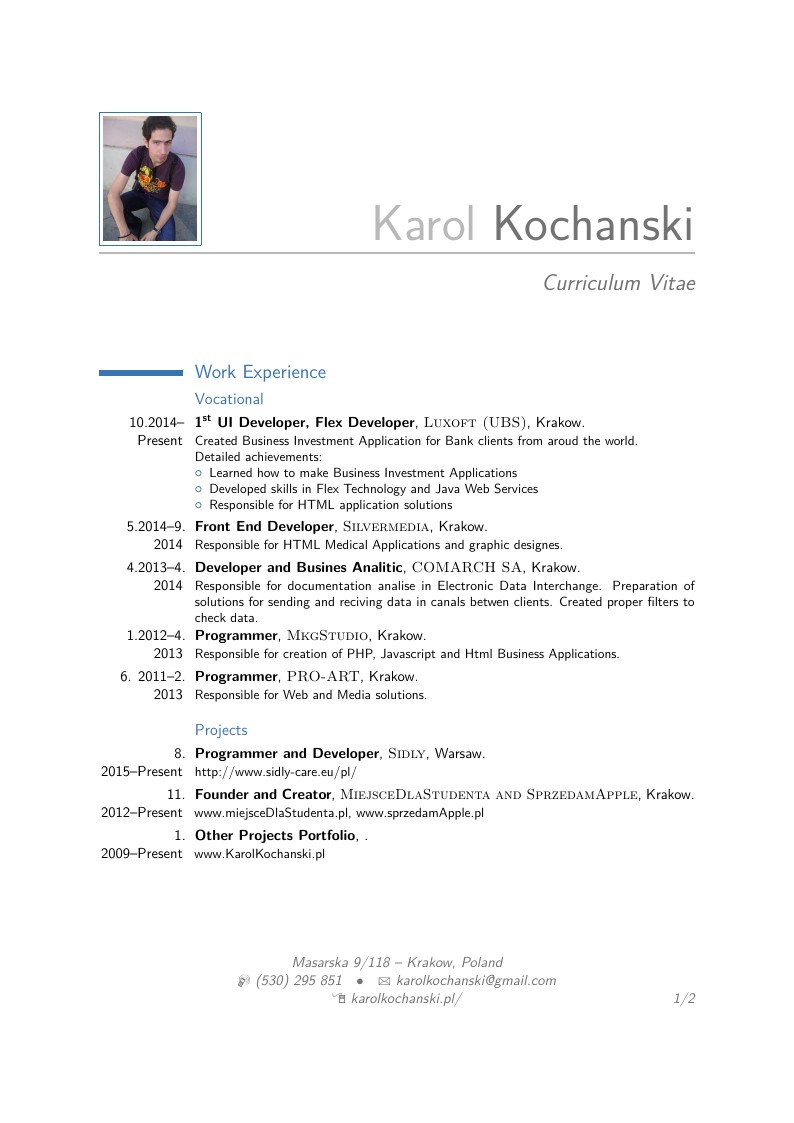
Karol Kochanski's Curriculum Vitae
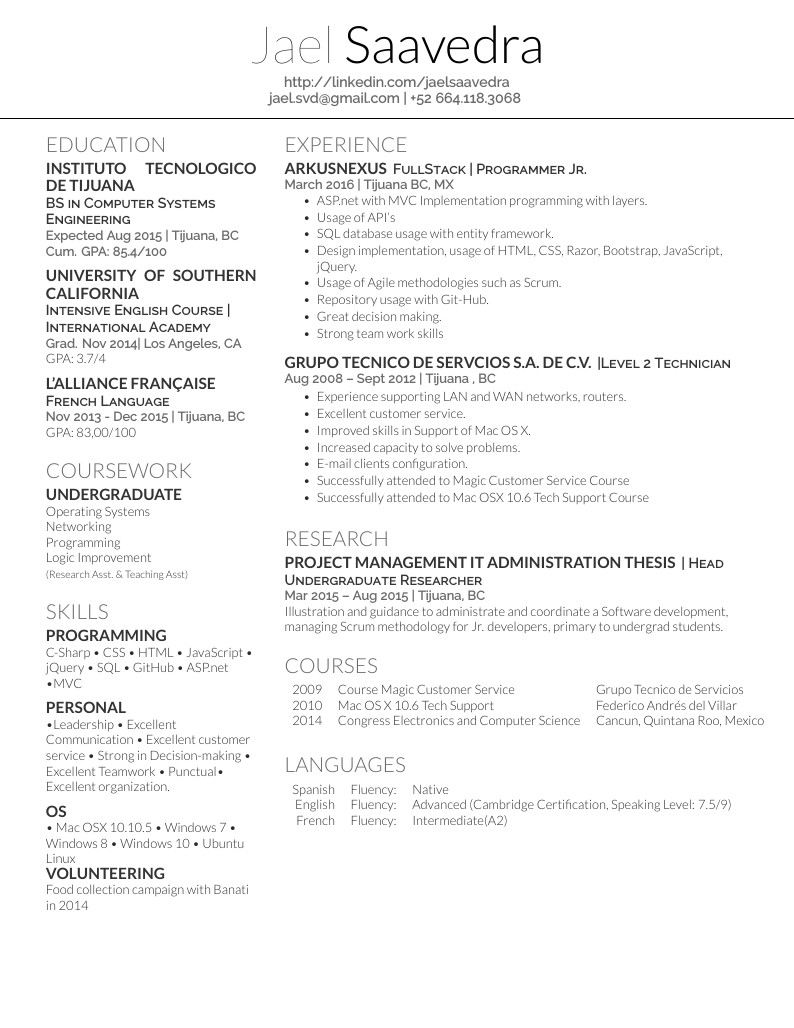
Jael Saavedra's English CV
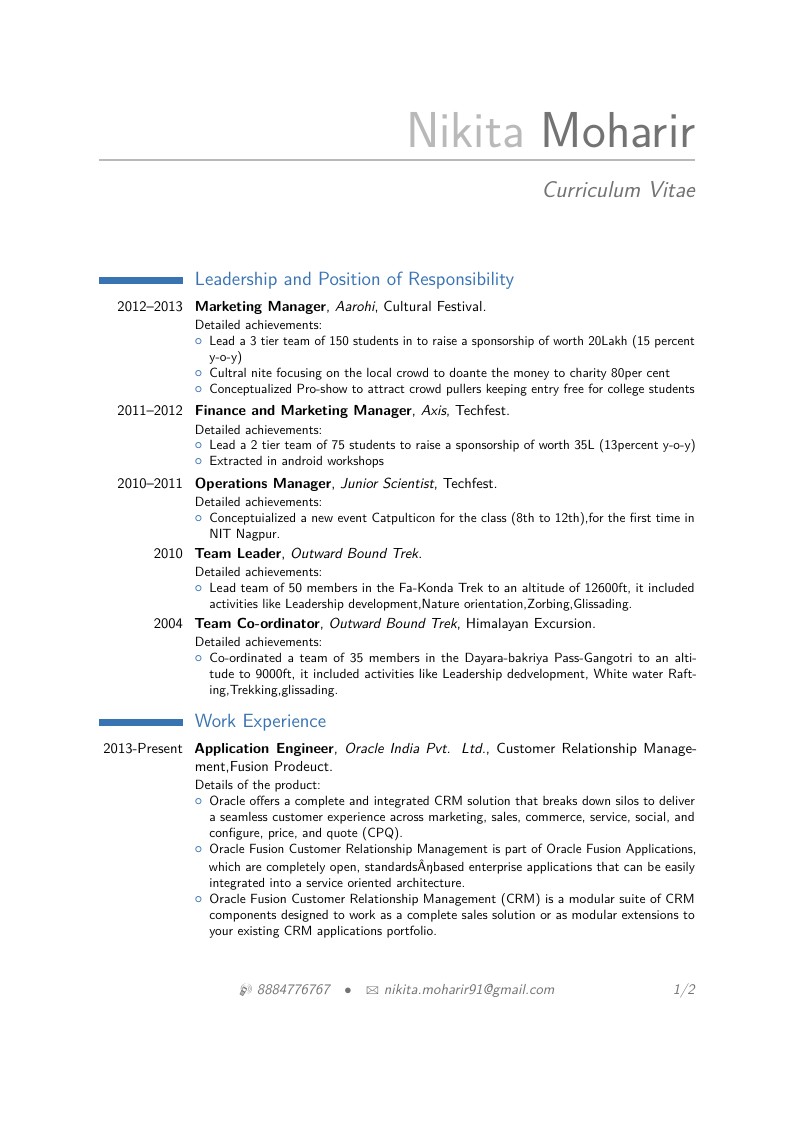
Nikita Moharir's Curriculum Vitae
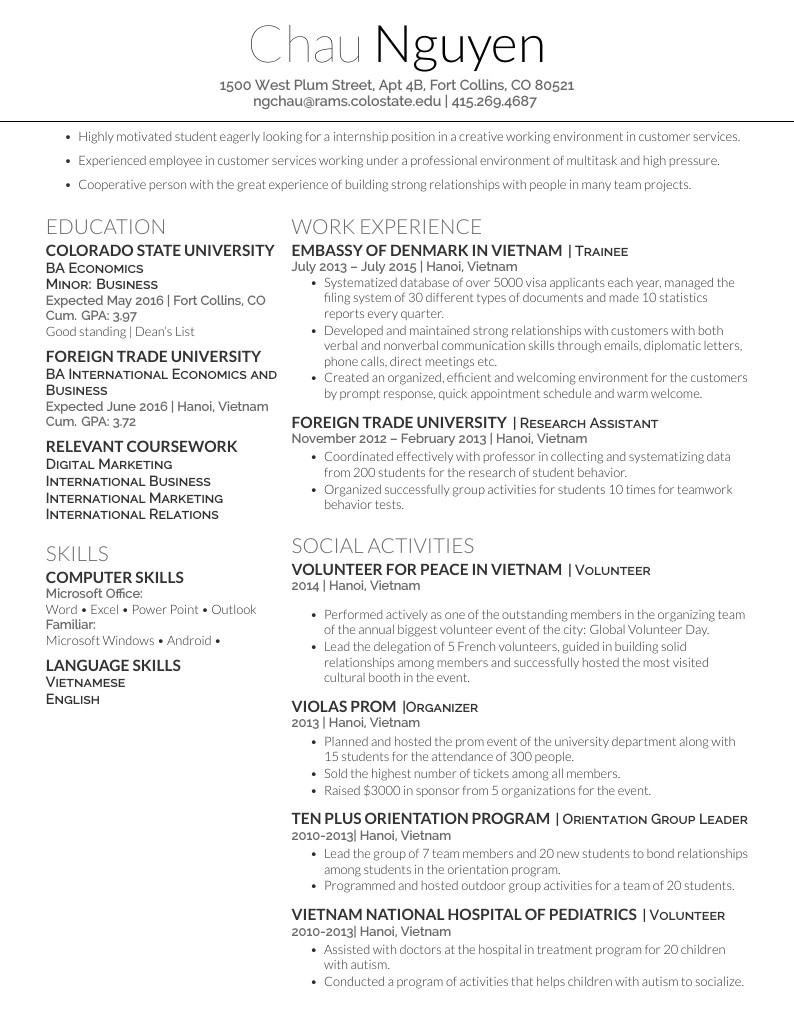
Chau Nguyen's CV
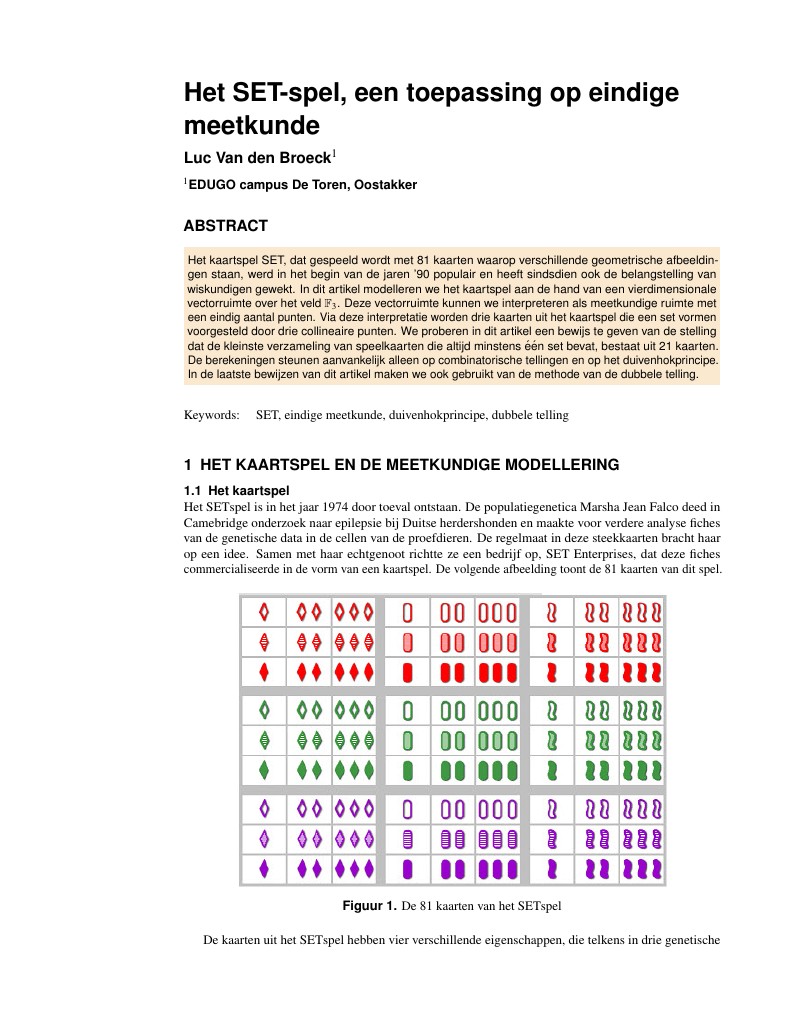
Het kaartspel SET, dat gespeeld wordt met 81 kaarten waarop verschillende geometrische afbeeldingen staan, werd in het begin van de jaren '90 populair en heeft sindsdien ook de belangstelling van wiskundigen gewekt. In dit artikel modelleren we het kaartspel aan de hand van een vierdimensionale vectorruimte over het veld 𝔽3. Deze vectorruimte kunnen we interpreteren als meetkundige ruimte met een eindig aantal punten. Via deze interpretatie worden drie kaarten uit het kaartspel die een set vormen voorgesteld door drie collineaire punten. We proberen in dit artikel een bewijs te geven van de stelling dat de kleinste verzameling van speelkaarten die altijd minstens één set bevat, bestaat uit 21 kaarten. De berekeningen steunen aanvankelijk alleen op combinatorische tellingen en op het duivenhokprincipe. In de laatste bewijzen van dit artikel maken we ook gebruikt van de methode van de dubbele telling.
\begin
Discover why over 20 million people worldwide trust Overleaf with their work.